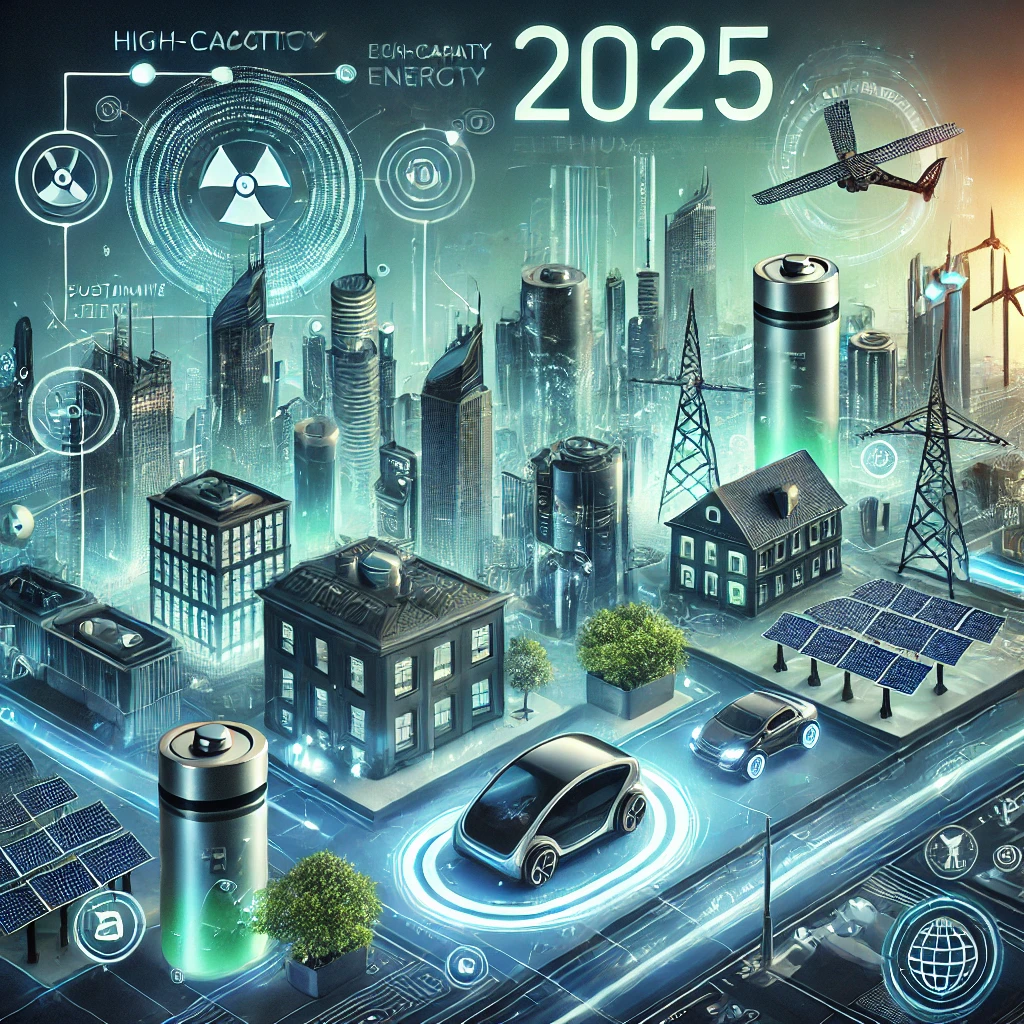As we move further into 2025, the future of lithium batteries looks more promising than ever. With the rise of electric vehicles (EVs), renewable energy solutions, and portable electronics, lithium-ion batteries have become a fundamental technology that powers much of our modern world. However, as the demand for energy storage solutions increases, so too does the pressure to improve the efficiency, sustainability, and safety of these batteries.
In this blog, we will explore some of the most exciting trends and innovations shaping the future of lithium batteries, from advancements in solid-state technology to efforts aimed at making battery production more sustainable.

1. Solid-State Batteries: A Revolutionary Shift
One of the most exciting developments in battery technology is the progress being made in solid-state batteries (SSBs). These batteries promise to outperform traditional lithium-ion batteries in almost every category, offering higher energy densities, greater safety, and longer lifespans.
Traditional lithium-ion batteries use a liquid electrolyte to transfer ions between the cathode and anode, which is both a limitation and a potential safety risk. In contrast, solid-state batteries use a solid electrolyte, which reduces the risk of leakage, thermal runaway, and fires. Solid-state batteries are also expected to offer a higher energy density, which means they can store more energy in a smaller, lighter package — a game changer for industries like electric vehicles (EVs) and consumer electronics.
While solid-state batteries are still in the research and development phase, they are expected to become commercially viable within the next few years. Major companies like Toyota, BMW, and QuantumScape are already making strides in this area, with promising results from prototype batteries.
2. Lithium-Sulfur and Lithium-Air Batteries: Pushing the Boundaries of Energy Density
While lithium-ion technology has been the dominant player for over a decade, alternative chemistries like lithium-sulfur (Li-S) and lithium-air (Li-Air) batteries are gaining significant attention due to their potential for even higher energy densities.
- Lithium-Sulfur Batteries: These batteries use sulfur as the cathode material, which is both abundant and cheap. They also have a theoretical energy density several times higher than conventional lithium-ion batteries, making them ideal for electric vehicles and long-duration energy storage. However, challenges with cycle life and efficiency remain, but breakthroughs in materials science could bring lithium-sulfur batteries to market in the near future.
- Lithium-Air Batteries: These batteries use oxygen from the air as the cathode material, which could theoretically provide an even greater energy density than lithium-sulfur. Lithium-air batteries could potentially offer the same energy capacity as gasoline, which would revolutionize electric vehicles. However, challenges with stability, efficiency, and practical implementation still need to be overcome before they can become viable for widespread use.
3. Battery Recycling and Sustainability
As demand for lithium-ion batteries continues to grow, so too does the need for sustainable practices. Mining for lithium, cobalt, and other key materials for battery production has raised significant environmental concerns, especially in regions where these resources are mined under poor labor conditions and with little regard for environmental impacts.
To combat these issues, there is a growing focus on improving battery recycling technologies. Companies are now developing more efficient ways to extract valuable materials like lithium, cobalt, and nickel from used batteries, which will help reduce the demand for new mining operations.
One promising development is the rise of closed-loop recycling systems, where used batteries are collected, broken down, and the materials reused in new batteries. This not only reduces waste but also minimizes the carbon footprint associated with raw material extraction. In 2025, we expect to see more investment in scalable recycling technologies, especially as governments worldwide push for greater sustainability in the energy storage sector.
4. Battery Manufacturing Innovations
The future of lithium batteries is not just about the chemistry inside the cells — it’s also about how these batteries are manufactured. Innovations in production techniques are helping to lower the cost of lithium batteries and improve their performance.
- Automated Production Lines: Companies are increasingly using advanced robotics and AI-driven manufacturing processes to improve the efficiency and scalability of battery production. This allows for higher consistency and reduced production costs, which will ultimately make electric vehicles and other battery-powered products more affordable for consumers.
- Solid-State Manufacturing: With solid-state batteries on the horizon, new manufacturing processes will be required to handle the unique materials and fabrication techniques involved. Researchers are developing new methods to create these batteries at scale, ensuring that they can eventually be produced at a competitive price point.
- 3D Printing: Another breakthrough that could impact battery manufacturing is the use of 3D printing technology. Researchers are exploring ways to 3D-print battery components, potentially allowing for more precise designs and more efficient manufacturing methods. This could lead to faster production times and lower costs for both lithium-ion and solid-state batteries.
5. Faster Charging Times and Longer Battery Life
In 2025, one of the most anticipated improvements in lithium batteries is the ability to charge faster without sacrificing battery life. Researchers are working on developing new anode and cathode materials that can support faster electron movement, thereby enabling faster charging times. Additionally, improvements in battery management systems are helping to balance the charge and discharge cycles more effectively, extending the overall lifespan of batteries.
This trend is particularly important for electric vehicles, where charging time has long been a barrier to widespread adoption. Faster-charging batteries will make it more convenient for drivers to use EVs for long trips, reducing range anxiety and making EVs a more practical alternative to gasoline-powered vehicles.
6. Energy Storage for the Grid
Beyond electric vehicles and portable electronics, lithium-ion batteries are also playing an increasingly important role in the energy sector. With the rise of renewable energy sources like solar and wind, there is a growing need for large-scale energy storage systems to balance supply and demand. Lithium-ion batteries are well-suited to this task, as they can store excess energy generated during peak production times and release it when demand is high.
As energy grids continue to evolve, we are likely to see more investment in grid-scale energy storage projects, helping to ensure the stability and reliability of renewable energy sources.
7. AI and IoT Integration for Battery Management
In the future, the integration of artificial intelligence (AI) and the Internet of Things (IoT) with battery management systems (BMS) will further optimize battery performance. AI algorithms can predict battery behavior, such as charging patterns and degradation rates, allowing for more efficient energy use and longer battery life. In the case of electric vehicles, this could lead to smarter charging systems that automatically adjust charging speed based on battery health and external factors like temperature.
The IoT aspect could also allow batteries to communicate with other devices, ensuring optimal performance in real-time. For example, a connected electric vehicle could sync with a nearby charging station, enabling faster and more efficient charging by adjusting settings according to the battery’s needs.
Conclusion
The future of lithium batteries in 2025 is filled with incredible innovations and opportunities. From the development of solid-state and alternative lithium-based chemistries to advancements in manufacturing, recycling, and sustainability, we are on the brink of a new era in battery technology. These advancements will not only help power the next generation of electric vehicles and consumer electronics but also play a crucial role in advancing renewable energy solutions and making our world more sustainable. As these technologies evolve, we can look forward to a future where batteries are safer, more efficient, and more environmentally friendly than ever before.

